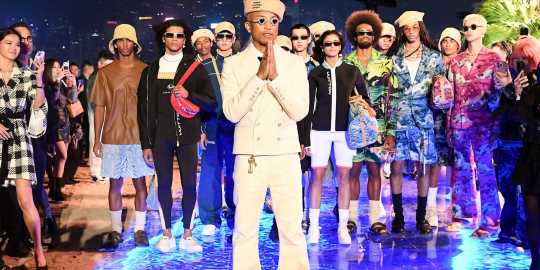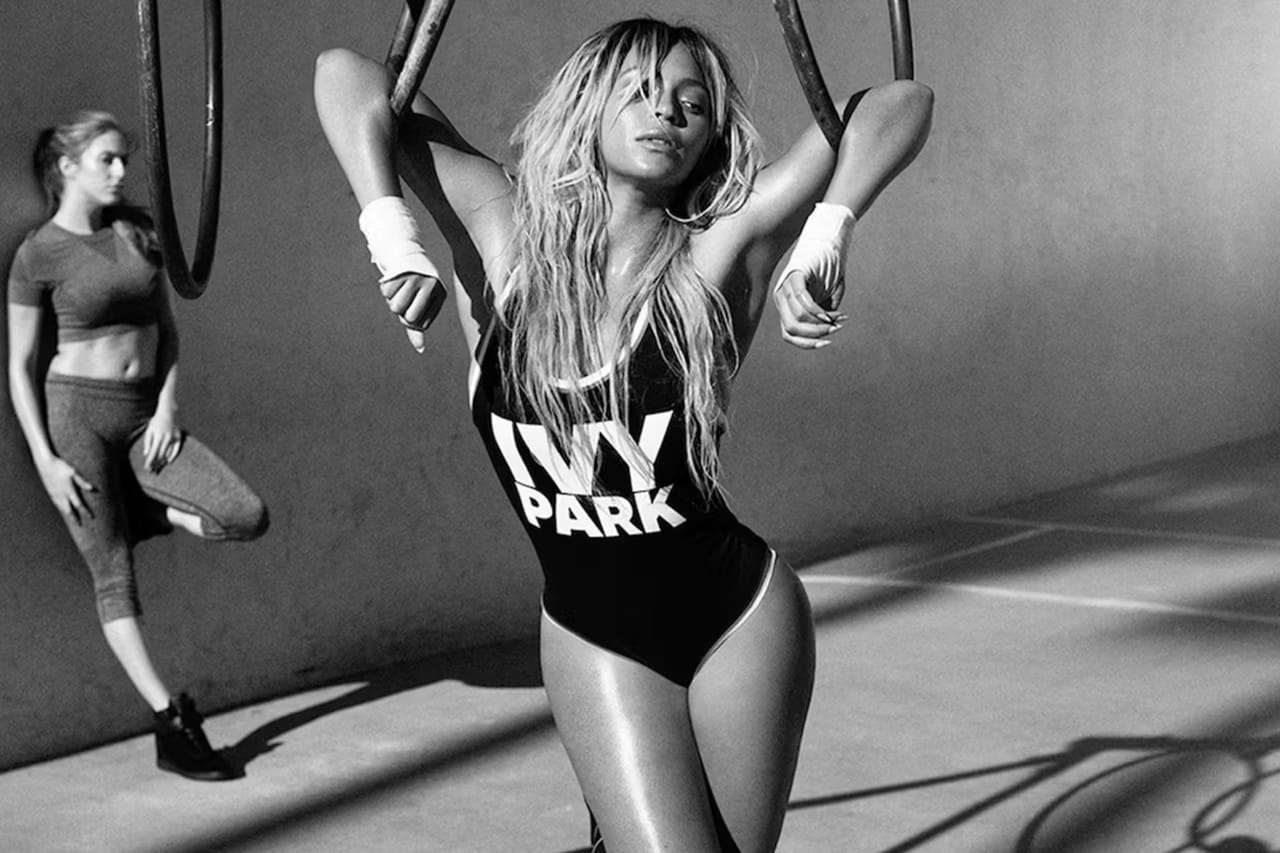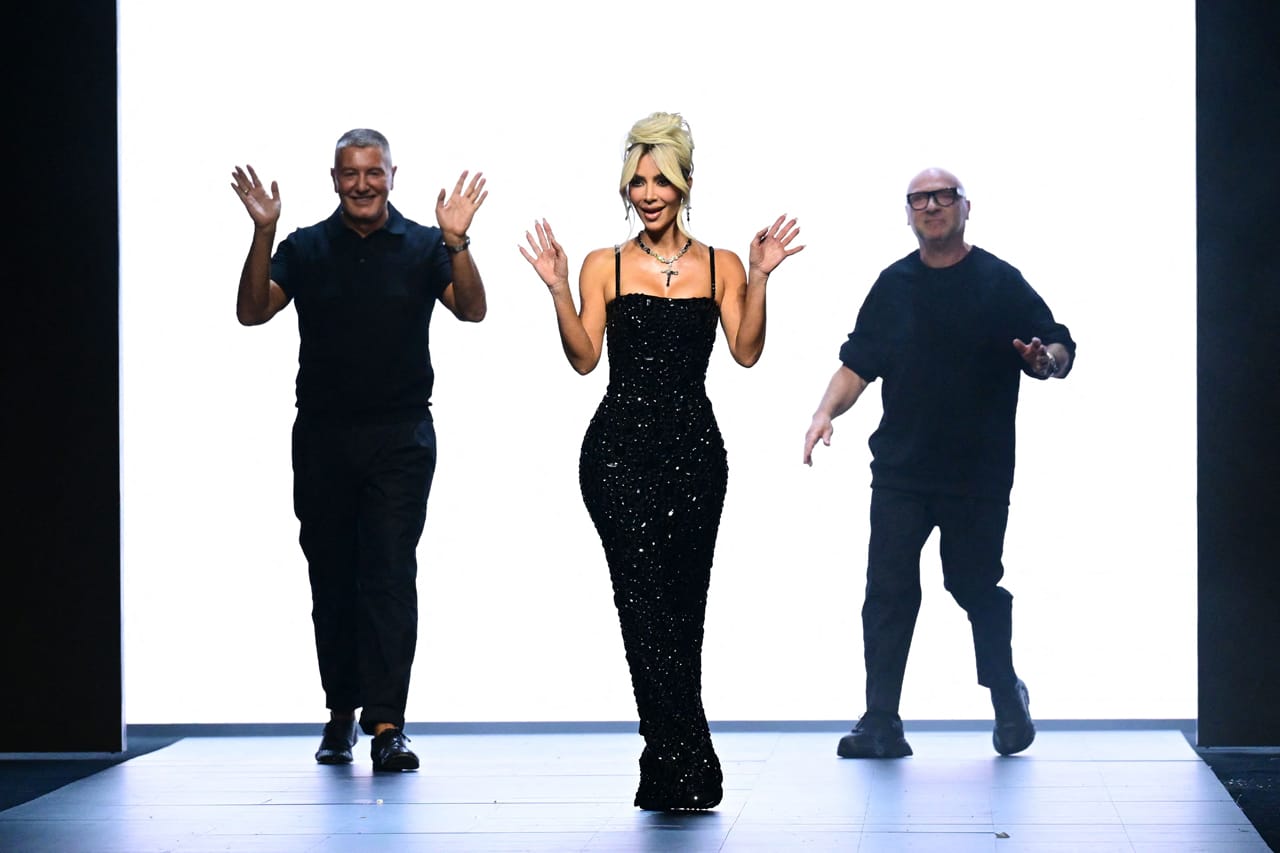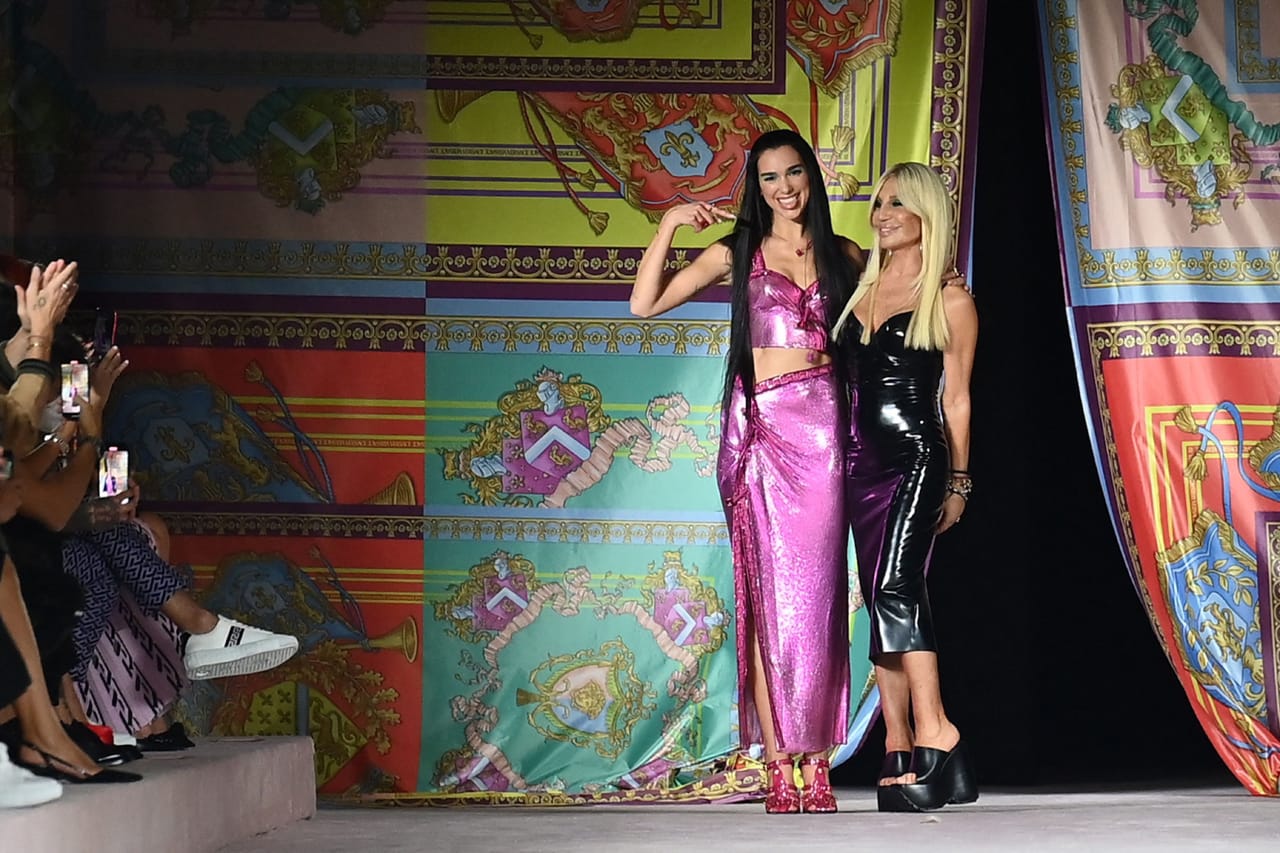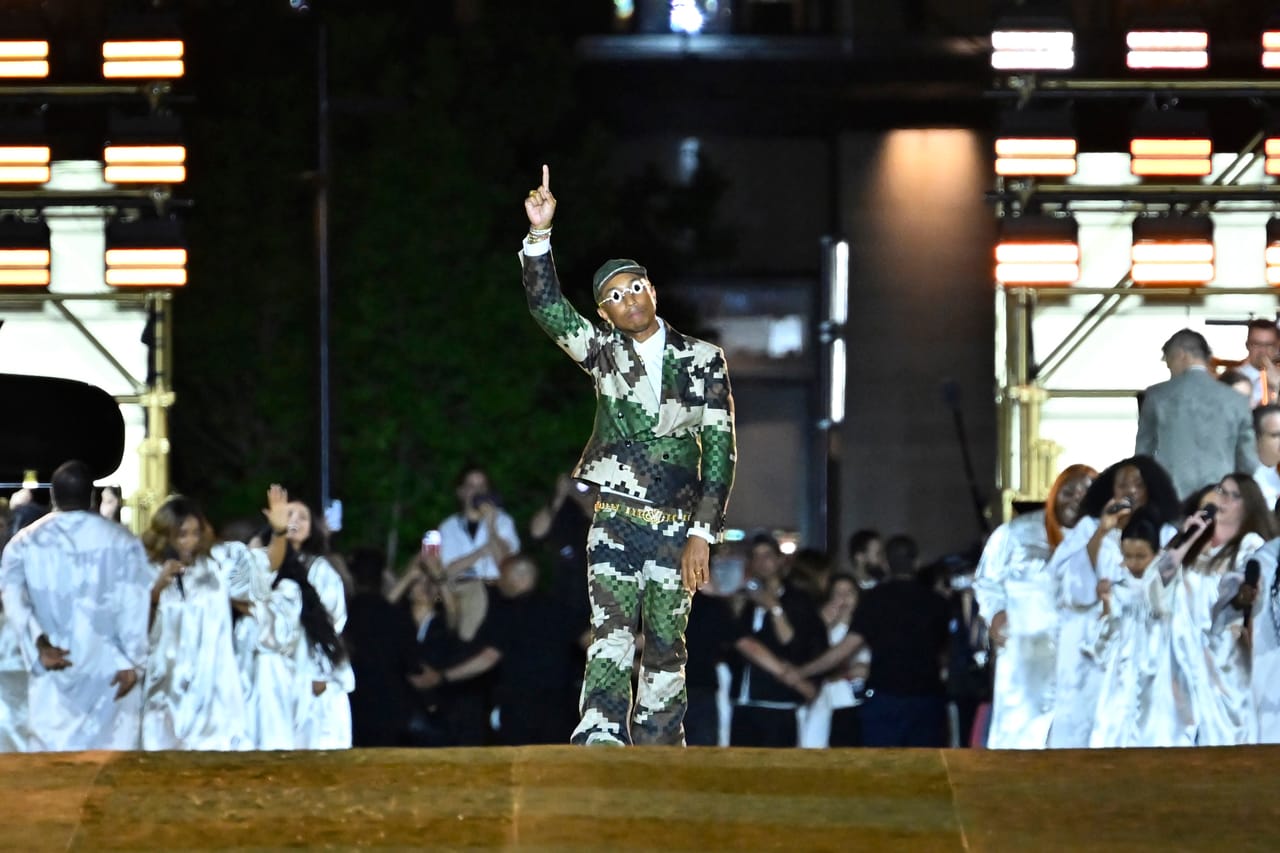On November 30, Pharrell Williams took a victory march down Hong Kong’s waterfront Avenue of Stars, parading through the formidable applause and high-held iPhones of the 1,200-strong crowd for his second output as Louis Vuitton Men’s artistic director. One week prior, Future pulled back the curtain on his much-anticipated, inaugural collection for LANVIN LAB, the Parisian label’s latest initiative focused on “dreaming” and “playing.” This was just around the same time that Rihanna relaunched her crowd-favorite Creeper at the helm of FENTY x PUMA, and only a few days after the launch of A$AP Rocky’s first motorsport-inspired drop for PUMA and Formula 1 at the Las Vegas Grand Prix. Let’s face it: we live in a peak celebrity creative director world.
It was once enough for celebrities to act as the face of a fashion brand, posing with the brand’s products in exchange for a cash lump sum. Still, as the Internet evolved and consumers’ instincts to call out cash-grabbing partnerships increased tenfold, many companies looked to harness more “authentic” relationships with their famous affiliates by crowning them with titles like “co-designer” and “creative director.” These decorative monikers, however, promise much more than a smiley endorsement shoot. They imply talent, skill and vision — traits that those without elevated cultural status must endure years, if not decades, of training in order to obtain.
The rich and famous are oftentimes granted a fast pass to securing fashion’s prestigious jobs, thanks to their cult-like fanbases, their heavily studied and imitated personal styles and their influence over demographics that exist outside of brands’ typical target markets. In short, people know them, and they follow them because they idolize them. This raises a question: in the era of social media, is the celebrity creative director all about exposure, or do the stars actually have what it takes to succeed in the industry’s top seats?
“Getting people’s attention is an art form unto itself, albeit less artisanal than [traditional fashion design]. It is its own fascination, and it’s definitely part of the equation.” —Evan Ross Katz
“It’s the new norm,” fashion analyst Alexandra Hildreth tells Hypebeast. “We think [celebrity appointments] are so redundant and frustrating inside the fashion industry, but commercially, they draw so much attention to a world that people might not normally watch.”
Over the last several years, we’ve seen an influx of celebrity creative directorships that appear void of true synergy, leaving many to question what, if anything, these VIP “visionaries” are actually doing, besides posting #sponsored content to increase a brand’s reach and cashing a check for it. A particularly glaring example was when Kendall Jenner assumed the top position at the luxury e-commerce platform FWRD in 2021. The company detailed her responsibilities as the following: overseeing the “look and feel of the site, curation of brands sold on the site, monthly edits of must-have trends, styles, and looks, as well as marketing ideas, brand partnerships, and brand activations.”
It’s quite unlikely that the buzzy reality star, who is also the highest-paid model in the world, a bonafide house-flipper and a tequila brand owner, has the time to accomplish FWRD’s laundry list of duties on a regular basis. Perhaps Jenner really is capable of doing it all, or maybe the hire was a strategic move for publicity on FWRD’s part. After all, attention is the scarcest resource in today’s perpetually addled, screen-dominated cultural climate.
“What is the value of attention?” asks pop culture and fashion commentator Evan Ross Katz, who believes that’s the real question posed by these appointments. “Getting people’s attention is an art form unto itself, albeit less artisanal than [traditional fashion design]. It is its own fascination, and it’s definitely part of the equation.”
Ivy Park
Celebrities entered the conversation because of their access to people’s attention and the Midas Touch that comes with their influence. It’s the driving force behind Rihanna’s highly successful run at PUMA, which began in 2014, and Beyoncé’s lucrative creative partnership with adidas, which ran from 2019 to March of this year. But it’s also the reason for Lindsay Lohan’s “disastrous” appointment as artistic director at Emanuel Ungaro in the aughts; Cardi B’s lackluster hire at Playboy and Kourtney Kardashian’s controversial sustainability executive title at Boohoo, among others. While each of their tenures can — and should — be evaluated on a case-by-case basis, when the partnership isn’t rooted in anything more than a desire for increased attention, these vanity roles tend to achieve fanfare-filled announcements and subsequently breed subpar results.
“I think back to [Alexander] McQueen’s runways,” says Katz. “They were viral before virality existed, but they were also heralded as conceptual and interesting. I find a lot of modern fashion moments to be empty, but I also think that that’s reflective of the culture.” Successful fashion designers often look to mirror the zeitgeist — be that through pop-cultural design references (Balenciaga’s Erewhon capsule!), atypical models (Troye Sivan for Miu Miu!), timely trends (Gabriela Karefa-Johnson’s “NOWstalgia” for Moschino!) or carefully-curated front rows (K-pop’s takeover!) — and in 2023, the Internet runs culture. Attention is indeed of the highest value, and celebrities can almost guarantee virality for fashion houses. They just have to use it wisely.
Brands can win over the public if their bigwig visionary hires actually put in the effort (or at least appear to do so), which led to the birth of the “celebrity co-designer.” Last year, Dolce & Gabbana brought on Kim Kardashian to curate its archival Spring/Summer 2023 collection; and this year, Versace enlisted Dua Lipa to co-create its Pre-Fall 2023 line. Calvin Klein, too, hopped on the trend, with a fully-fledged collection designed in collaboration with BLACKPINK’s Jennie.
Miguel Medina/Afp/Getty Images
In lieu of handing over full control, the short-term role offers fashion houses more freedom to latch their historic names to those of pop culture’s royalty without an extensive commitment. On the other hand, however, the temporary rush limits the evolution of the celebrity’s creative potential long-term; outsiders are left wondering about the true level of the celebrity’s involvement, and, in some cases, targeted consumers are restricted from reaching a purchasing decision.
“I think hiring a celebrity [as a full-time creative director] is better received by the public than doing a one-off collaboration,” says Hildreth. “The one-time collections can appear wasteful, and they usually don’t allow enough time to really formulate an identity.”
Take Lipa’s Versace collection, for instance, which referenced a number of silhouettes in her own wardrobe. While the line was well-received stylistically by her audience, it still possessed the Donatella touch, meaning it still came at a sky-high price tag. Many of Lipa’s followers took to social media to complain about the prices, but, to be frank, those tags were very much in line with those of the high-fashion house’s previous collections. Perhaps, fans would be more likely to invest in a piece if they had the time to witness the collaboration’s vision blossom over several seasons — and save up in the interim.
Lipa was not in the atelier hand-stitching those garments, and neither was Kardashian or Jennie or Rihanna or Beyoncé. But that wasn’t listed as a requirement for their roles; for celebrity designers and creative directors, it’s about shaping the overall vision. And, simply put, some will be better at that than others.
Marco Bertorello/Afp/Getty Images
Among the best celebrities in fashion’s creative director sphere is Pharrell. His appointment at Louis Vuitton in February, while met with polar debates among fashion-philes, marked the highest point in the movement toward famous faces at luxury fashion houses; and from what we’ve seen so far, it’s working, at least from an attention standpoint.
“To discount Pharrell as a designer or creative director is kind of naive if you understand his history and Vuitton’s history,” says Hildreth. It’s true: Pharrell has run his streetwear brand Billionaire Boys Club for almost two decades, he’s primarily responsible for putting brands like BAPE and Human Made on the map in the US and he almost single-handedly brought Cactus Plant Flea Market, run by his former assistant Cynthia Lu, into relevancy. His personal style is universally lauded, and, with no official design training, his cultural relevance felt adjacent to that of Virgil Abloh, who famously strayed from the true “designer” descriptor himself and played a pivotal role in acquainting LV with a new wave of famous comrades.
“[Pharrell is] a household name in a similar vein as Louis Vuitton,”said Katz. “I think that’s important in terms of where the fashion industry on the whole is going.”
In June, The New York Times critic Carthy Horyn called Pharrell’s debut show “one of the splashiest seen [in Paris] in a while.” The spectacle, which drew an ultra-famous crowd that included Beyoncé, Kim Kardashian, Rihanna, A$AP Rocky, Lewis Hamilton, J Balvin and Zendaya, among many others, and included a post-show performance from JAY-Z, saw fashion and celebrity converge in a manner that the industry had not witnessed before, not even through Virgil Abloh’s work at LV.
“Luxury fashion has never catered opportunities to smaller designers, and celebrities’ names being tossed into the hat will not affect a conversation that their name was never in to begin with.” —Alexandra Hildreth
The show broke the brand’s records by earning 775 million views on its owned platforms and an additional 300 million views on press accounts. (For reference, LV’s Fall 2023 show generated 441 million views on the House’s owned platforms.) The exact figures for his recent Pre-Fall 2024 show have not yet been published, but it’s likely the affair will post high-octane results, given its similarly fame-filled atmosphere. Even with reach through the roof, however, Pharrell’s success, in the industry, will ultimately be measured through the sales report that follows the release of his inaugural collection, come spring. Is the sheer attention enough to earn a positive result? Most likely, but we’ll have to wait to see.
Prior to Pharrell’s appointment, rumors circulated about younger designers, including Grace Wales Bonner and Martine Rose, taking the brand’s vacant creative director role. Many found it “challenging to stomach” one of the globe’s largest fashion houses opting for a household name instead — especially since LV’s unprecedented decision to hire Abloh in 2018 ultimately produced one of this century’s most-celebrated visionaries. As brands continue to favor the famous, traditional designers — or even designers in the mold of Abloh, uniquely talented if not classically trained — ultimately lose out on breaking through at high-fashion houses. Recent chatter blames celebrities for this shift (and they can certainly claim some fault), but there’s a squabble to be made about this always being the case in the industry.
“Luxury fashion has never catered opportunities to smaller designers, and celebrities’ names being tossed into the hat will not affect a conversation that their name was never in to begin with. You could make the same argument about the musical chairs of the four white male designers that rotate around the three big houses,” says Hildreth, referencing Kering’s all-white, all-male and not-traditionally-famous roster of creative directors that maintain control of the conglomerate’s brands. Katz, too, points out that this issue isn’t unique to fashion: “When you see a new show coming out with Nicole Kidman, there’s another actress that’s Julliard-trained and has been working in the industry for 30 years that might be just as good as Nicole in the role. But she’s not Nicole and therefore will never get it.”
Aurelien Meunier/Getty Images
The truth isn’t perfect: fashion, like every other creative industry, is a business first, and brands are going to chase dollar signs in order to stay afloat. In 2023, it’s idealistic to expect a high-profile fashion house like Louis Vuitton to hire its lead designer based on talent alone, when it’s become abundantly clear that the brand’s priority is capturing attention with colossal spectacles. That’s not to say that it doesn’t happen: Gucci, among others, has long looked to its anonymous caverns for leaders; designers like Kim Jones at Dior, Demna at Balenciaga, Jonathan Anderson at LOEWE and Daniel Lee at Burberry have blossomed from obscurity to “fashion famous,” and Hildreth notes that you’ll probably never see a “straight-up celebrity” appointed to a craft-oriented brand like Margiela or Dion Lee.
Overall, the answer to this article’s titular question is not a resounding “yes” or “no,” but if the right celebrity — one with a strong creative vision, cultural importance and industry relationships (great personal style doesn’t hurt either) — is paired with the right brand, the result can become a phenomenon. If you’re looking to place a bid on who might be next to take one of the industry’s vacant creative director seats, it might be wise to scan Fashion Week’s front-row regulars before putting down your money.
Source: Read Full Article
